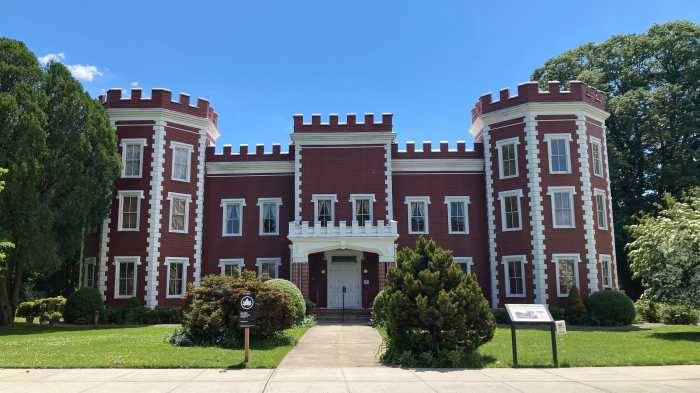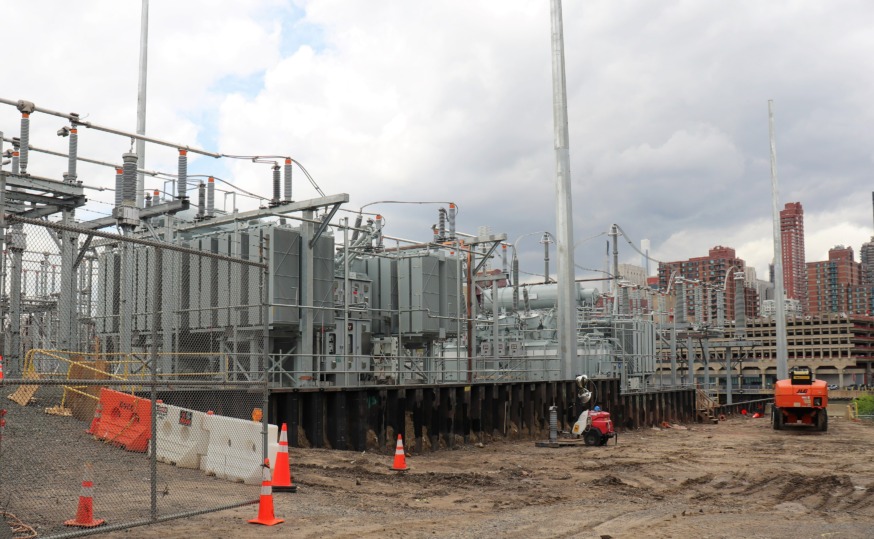
A new six-mile-long renewable energy line running from a Con Edison substation in Astoria, pictured, to Corona has gone into operation – marking a major step toward New York’s transition from fossil fuels to green energy sources. (Photo by Michael Dorgan)
May 4, 2023 By Michael Dorgan
Queens is going green.
The energy provider Con Edison has announced that a new six-mile-long renewable energy line running from Astoria to Corona has gone into operation, marking a major step toward the borough and the state’s transition from fossil fuels to green energy sources.
The line, along with the installation of new infrastructure at a Con Edison substation in Astoria, cost $275 million to construct and starting in 2026 will be using mostly imported renewable energy sources from Canada, the company said at a press conference on Wednesday, May 3.
The substation is located on Vernon Boulevard at 35th Avenue and is known as the Rainey Substation. It receives the energy and then sends it down along the underground line to another substation in Corona.
The new infrastructure will eventually help retire some older, fossil fuel power plants across the city which emit high levels of carbon dioxide and other pollutants. The project will also reduce the demand for “peaker” plants, which are prevalent in western Queens ,and require the burning of oil and gas to generate electricity at times when the demand for power is high, officials said.
For instance, Con Edison said that the new line has enabled it to close down the “NRG Energy” power plant at its facility in the Ditmars section of Astoria on May 1. The plant, and other power plants located along the Astoria/Long Island City waterfront, have caused elevated pollution levels leading to the corridor being nicknamed “Asthma Alley.”
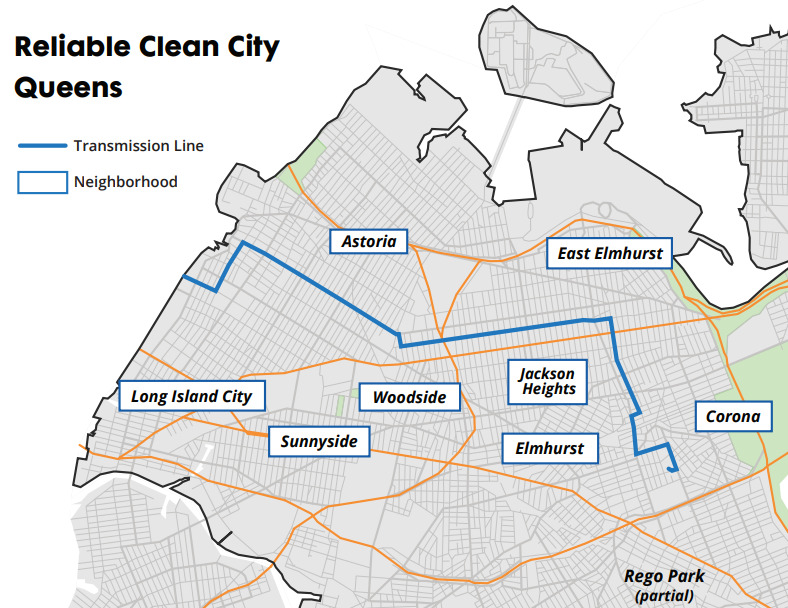
A map of the new six-mile line (Photo provided by Con Edison)
Tim Cawley, the chairman and CEO of Con Edison, announced at the Rainey Substation that the new line had gone into operation. He was joined by Queens Borough President Donovan Richards, New York State Public Service Commission Chairman and CEO Rory Christian and Council member Jim Gennaro who represents District 24 in central Queens and chairs the Council’s Committee on Environmental Protection, Resiliency and Waterfronts. Laura Rothrock, the president of the Long Island City Partnership, a neighborhood economic development organization, was also present along with labor and community leaders and Con Edison workers who constructed the project.
“Today marks a significant step forward in providing the infrastructure to reliably deliver clean energy to our customers while enabling the closure of inefficient, fossil fuel-burning peaker plants,” Cawley said.
Cawley said Con Edison’s shift to renewables will help the state reach its climate change goals, with New York aiming to generate 70% of its electricity via clean energy by 2030 and 100% by 2040 which is required under the Climate Leadership and Community Protection Act.
“We are strong supporters of New York’s climate goals,” said Cawley. “The retirement of [the NRG Power Plant] and other peaker plants to follow, will reduce carbon emissions and help the urgent fight against climate change.”
Cawley said the project was delivered on time and under budget. The project took around two years to complete, according to a Con Edison spokesperson.
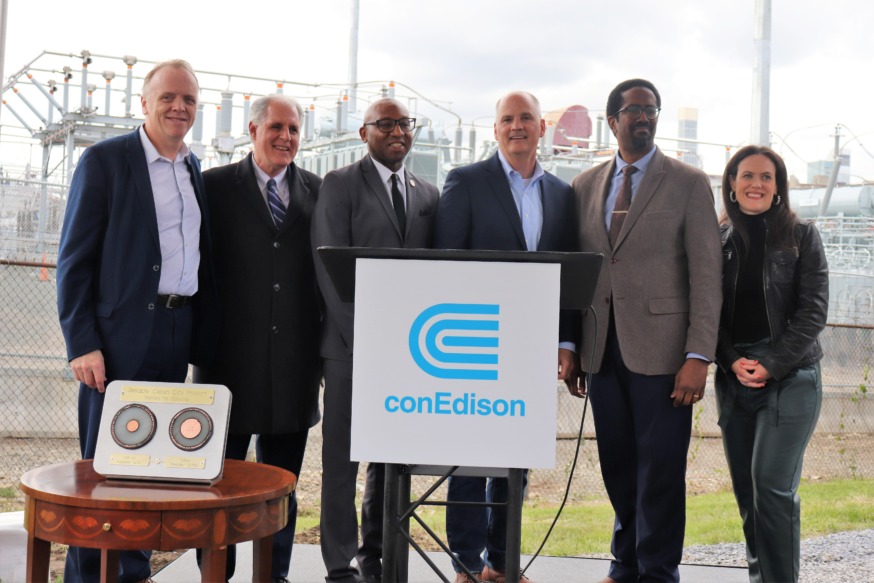
Officials announced that a new Con Edison renewable energy line from Astoria to Corona is now operational. (Photo by Michael Dorgan)
The Queens transmission line will be able to carry 300 megawatts of power, or enough electricity for 240,000 average-sized homes, according to officials.
Con Edison is also constructing two other renewable energy lines — one in Brooklyn and the other in Staten Island — which will add a further 600 megawatts of transmission to the city after the work is completed in 2025. The three projects form part of the company’s Reliable Clean City Project, an $800 million investment in green energy infrastructure that aims to deliver hundreds of megawatts of energy to residents.
Richards welcomed the announcement and said that the project will help bring cleaner air to western Queens.
“Queens is done with the days of disinvestment in our health — both the health of our families and the health of our environment,” Richards said. “There is no mission more critical than our transformation into a borough run on renewable energy, and Con Edison’s Reliable Clean City Project represents a significant step toward that goal. I look forward to working with Con Edison and all of our partners to ensure that Queens becomes a global leader in the fight against climate change and environmental injustice.”
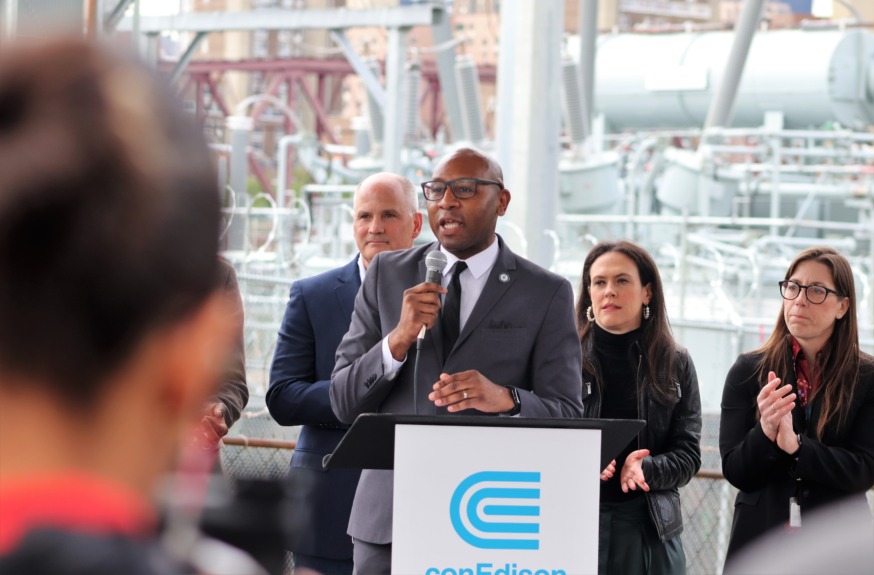
Queens Borough President Donovan Richards speaking at the announcement that a new Con Edison renewable energy line from Astoria to Corona has gone into operation (Photo by Michael Dorgan)

A plaque acknowledging the new Con Edison renewable energy line from Astoria to Corona (Photo by Michael Dorgan)
Gov. Kathy Hochul said that upgrading New York’s transmission system to renewable energy is a top priority.
“With this critical new transmission line, we are enhancing and upgrading New York City’s electric grid and enabling the continued development of renewable energy,” Hochul said in a statement.
Con Edison said it expects the city’s demand for electricity to grow as more drivers adopt electric vehicles while lawmakers have just passed a new law banning new buildings from having gas.
The company said it is helping with the installation of EV chargers across the city and has helped customers connect 55,000 solar projects to its grid in recent years which has the capacity to produce around 500 megawatts of clean, renewable energy. The company said it also works with customers to help them use less energy.
Con Edison’s transition to renewable energy will cause an initial increase in energy prices, Cawley said.
“It will have an incremental increase but not a significant impact,” Cawley said. “In the early part, there will be an investment and there’s a potential that will increase but when you think about renewables and after they are added, we don’t need fuel to run them, the sun and the wind will run them, so it [prices] will likely level off.”
Cawley also said the company already has systems in place to subsidize around 400,000 low-income New Yorkers to pay their energy bills.
The transition to renewables is not without challenges in terms of reliability.
For instance, California has witnessed an increase in blackouts over the last number of years with critics placing some of the blame on the state’s big shift to electricity resulting in record demand. Solar and wind also pose variability challenges due to fluctuations in the weather.
Cawley said Con Edison is incredibly focused on reliability and has a two-pronged strategy in place to address the issue; having enough backup power available and building out the grid’s capacity capabilities.
“Our underground network system is 55 times more reliable than the national average,” Cawley said.
“We need to make sure we have enough backup generation to fill in the gaps when the sun’s not shining or the wind’s not blowing. We are keenly focused on it… we’re on it.”
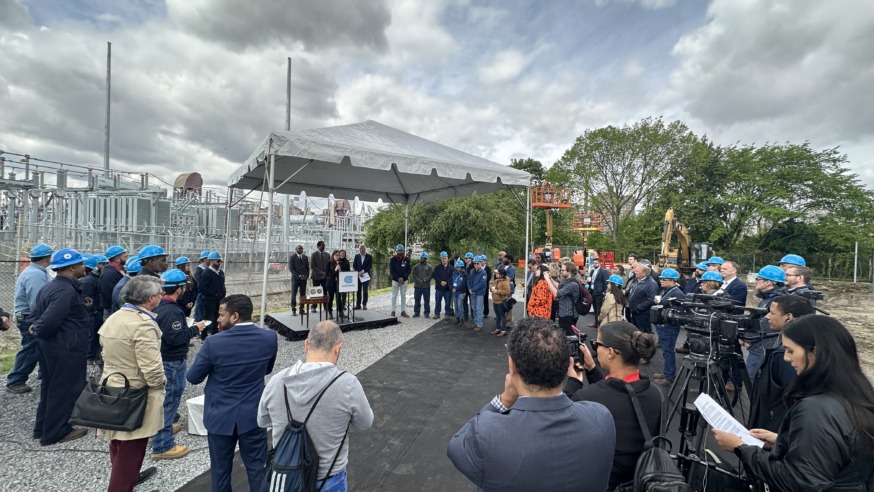
New Con Edison renewable energy line from Astoria to Corona goes into operation phone (Photo by Michael Dorgan)
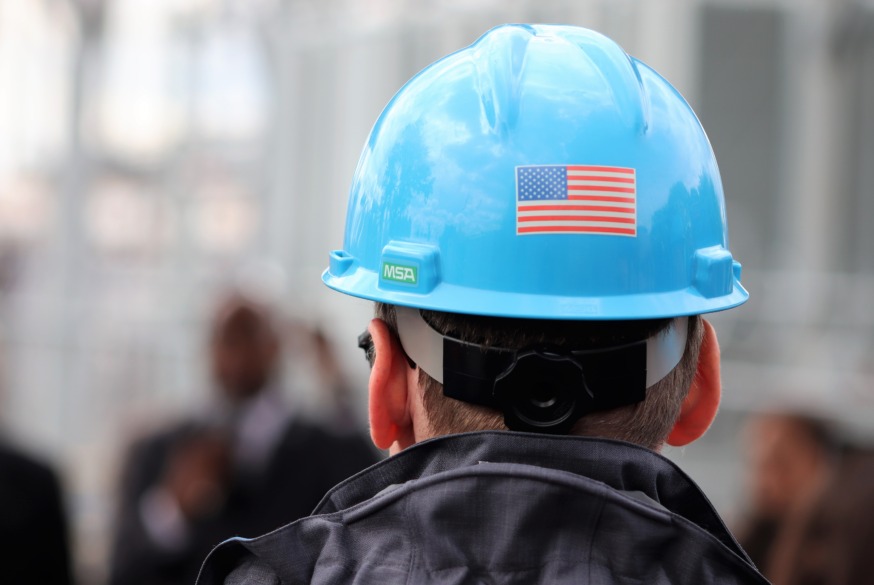
New Con Edison renewable energy line from Astoria to Corona goes into operation (Photo by Michael Dorgan)
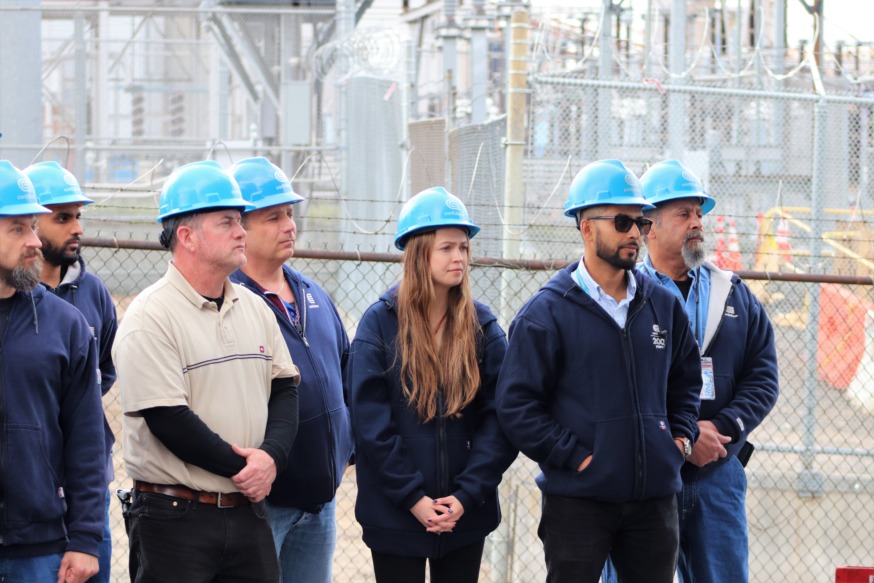
New Con Edison renewable energy line from Astoria to Corona goes into operation (Photo by Michael Dorgan)
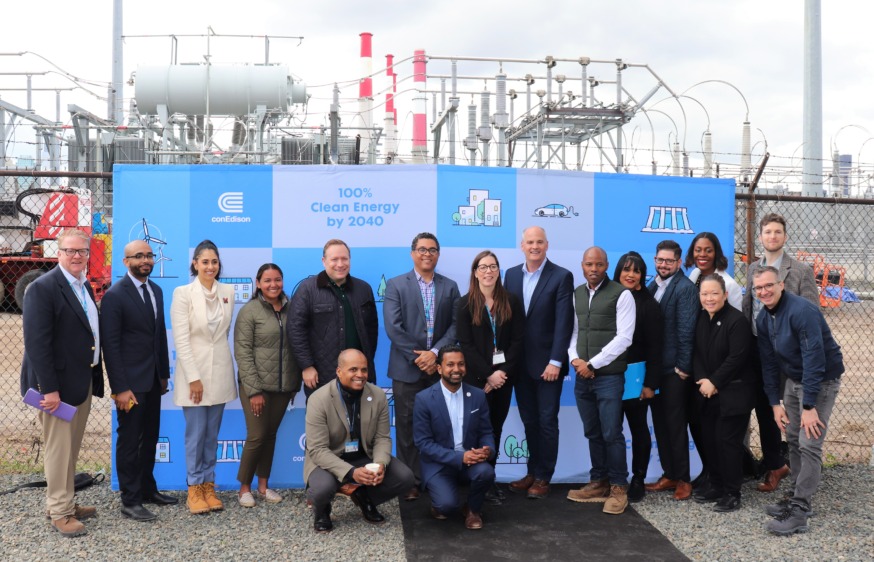
New Con Edison renewable energy line from Astoria to Corona goes into operation (Photo by Michael Dorgan)
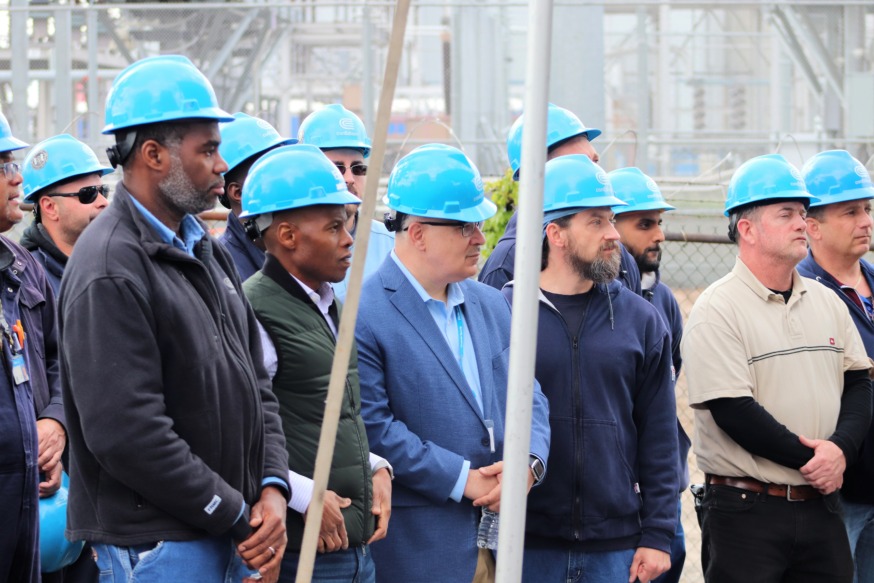
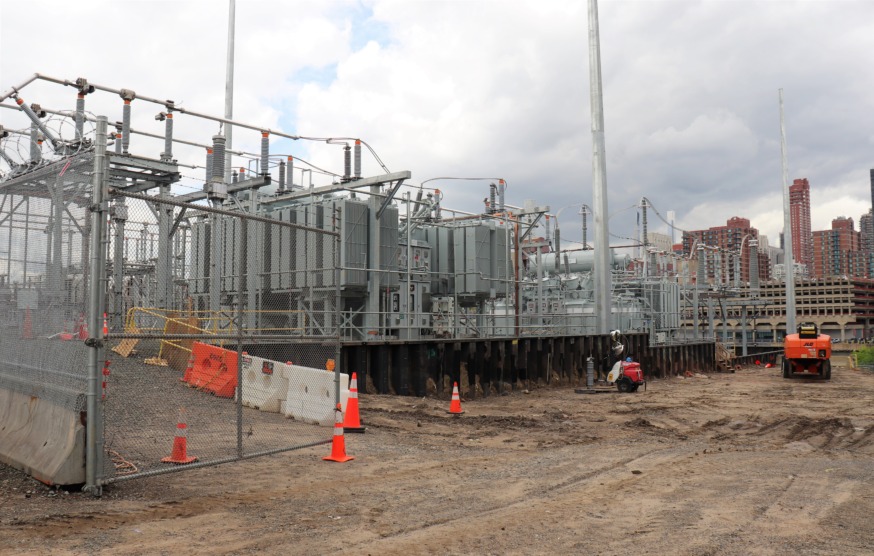
A new six-mile-long renewable energy line running from Astoria to Corona has gone into operation – marking a major step toward New York’s transition from fossil fuels to green energy sources. (Photo by Michael Dorgan)




